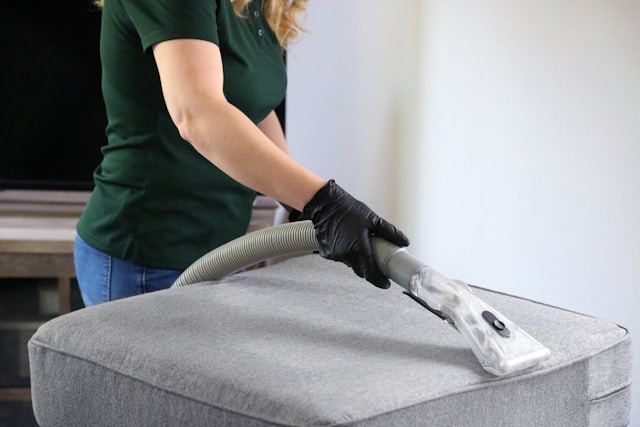A truly clean home extends well beyond what meets the eye—it forms the foundation of health and comfort for your entire household. The delicate balance between air quality, dust, and allergens profoundly shapes our daily wellbeing, influencing everything from how well we sleep to how easily we breathe. When you combine consistent cleaning habits with effective tools like a vacuum, proper dusting techniques, and reliable air filtration systems, you create a powerful defense against harmful particles that can compromise your family’s health.
The Hidden Impact of Indoor Air Quality
Indoor air quality encompasses the cleanliness and safety of the air circulating within our homes and workplaces—factors that directly impact our health and daily comfort. While outdoor pollution dominates headlines, the air inside our homes often harbors equally concerning contaminants, despite the fact that most of us spend roughly 90% of our lives indoors.
Your home’s air carries an invisible cocktail of pollutants: microscopic dust particles, pet dander that clings to surfaces, pollen that sneaks through open windows, mold spores lurking in humid corners, and chemical residues from everything from furniture finishes to household cleaners. This mixture can spark reactions ranging from minor eye irritation and sneezing fits to serious complications like asthma flare-ups and persistent respiratory issues.
Fortunately, you can take control of your indoor air quality through targeted strategies. HEPA-filtered air purifiers excel at capturing even the finest particles, while strategic ventilation brings fresh outdoor air into circulation throughout your space. Yet perhaps the most powerful tool remains surprisingly simple: maintaining a thorough, regular cleaning routine.
Understanding Household Dust: What It Is and Where It Comes From
Household dust represents far more than the simple nuisance many people assume it to be. This complex mixture of particles tells the story of daily life within your home. Despite common misconceptions, dead skin cells make up only a small fraction of household dust. The real culprits include fabric fibers shed from clothing, bedding, and upholstery; soil particles carried in on shoes and clothing; seasonal pollen; pet dander; and various other microscopic debris.
Dust doesn’t settle randomly—it follows predictable patterns that reflect how you live in your space. Entryways and hallways naturally collect more dirt and outdoor particles due to constant foot traffic, while bedrooms tend to accumulate fabric fibers and the skin cells we shed during sleep. Those forgotten corners and spaces beneath furniture become dust collection zones simply because air circulation can’t reach them effectively.
Key Takeaway: Understanding dust’s composition and behavior helps explain why regular removal matters so much. When household activities stir up accumulated particles, they become airborne again, degrading air quality and potentially triggering allergic reactions. Consistent cleaning with the right tools prevents this cycle and maintains a healthier indoor environment.
Allergens in the Home: Identification and Prevention
Your home likely harbors several types of allergens that can significantly impact sensitive family members. Dust mites top the list—these microscopic creatures flourish in warm, humid environments like mattresses, pillows, and upholstered furniture. Pet dander from cats, dogs, and other furry companions creates another common trigger, while mold spores develop wherever moisture lingers. Even with windows closed, seasonal pollen finds its way indoors through clothing, packages, and brief door openings.
For those with sensitivities, these allergens can transform a comfortable home into a source of constant discomfort. Symptoms might include persistent sneezing, watery eyes, congestion, or more serious reactions like asthma attacks. Beyond immediate discomfort, ongoing exposure can disrupt sleep patterns, reduce concentration, and diminish overall quality of life.
Research-backed approaches to allergen control include washing all bedding in water heated to at least 130°F weekly, installing HEPA filters in both standalone air purifiers and your home’s HVAC system, reducing clutter that provides hiding spots for dust and allergens, and maintaining indoor humidity between 30-50% to create an environment where dust mites struggle to survive. When these measures don’t provide sufficient relief, consulting with an allergist or indoor air quality professional can help pinpoint specific triggers and develop a more targeted approach.
Best Practices for Effective Home Cleaning
Effective cleaning relies on science, not just elbow grease. The goal isn’t simply to make surfaces look clean—it’s to actually remove particles rather than shuffle them around your home. Damp wiping proves far superior to dry dusting because moisture captures particles instead of launching them into the air where they’ll eventually settle elsewhere. Similarly, vacuuming with proper HEPA filtration outperforms traditional sweeping, which often kicks dust back into circulation.
When choosing cleaning tools, prioritize equipment designed to capture fine particles effectively. Vacuum cleaners equipped with HEPA filtration can trap particles as tiny as 0.3 microns—small enough to remove many allergens and dust particles that other methods simply can’t handle.
Target your efforts where they’ll make the biggest difference:
• Bedrooms: Weekly bedding washes and monthly mattress vacuuming
• Living spaces: Regular attention to upholstered furniture and thorough carpet cleaning
• Entryways: Strategic doormat placement and frequent cleaning to minimize soil tracking throughout the house
Real-World Scenarios: How Cleanliness Impacts Daily Life
The Johnson family’s experience illustrates the tangible benefits of improved cleaning practices. Their young son’s nightly allergy symptoms had been disrupting the entire household’s sleep for months. After implementing a comprehensive approach—weekly deep vacuuming sessions, hot-water bedding washes, and strategically placed air purifiers—they documented a remarkable 60% reduction in nighttime symptoms within just one month.
Remote workers have reported similar transformations. Many discover that addressing dust buildup in their home offices through regular cleaning and improved air circulation leads to better focus and fewer afternoon headaches—benefits that extend well beyond allergy relief.
The Lasting Benefits of a Clean, Healthy Home
The relationship between air quality, dust, allergens, and wellbeing creates a compelling case for prioritizing home cleanliness. A well-maintained indoor environment delivers lasting health dividends: more restful sleep, fewer allergy flare-ups, and improved respiratory function throughout your family. Even modest, science-informed adjustments to your cleaning routine can produce noticeable improvements in both your indoor environment and daily comfort.
Consider taking a fresh look at your current cleaning approach. By implementing these evidence-based strategies, you’re not just creating a more attractive living space—you’re investing in your family’s long-term health and wellbeing.


